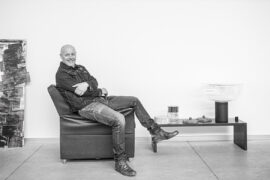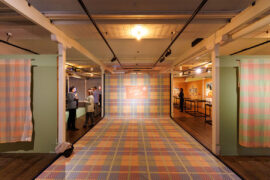Blending two distinct cultures can create some fascinating results, writes Yelena Smetannikov.
October 18th, 2011
The Shanghai International Design Centre is a collaboration between Milan-based firm AM Progetti, and Tongji Architectural Design Institute. Once completed, the 300 000 sqm Centre will be the largest design complex in the world.
The 2 towers will accommodate a museum, hotel, and library, as well as commercial and office space, which will open onto wide green terraces located on each level.

Joseph di Pasquale, head architect for the project, stated that he took on a more philosophical approach for the Design Centre, avoiding the “brand” approach of designing in a signature style like other global architecture firms.
“We wanted our creations to become the result of contamination between our original Western and Italian background with local traditions and culture,” he said.
The crux of Pasquale’s ideas lay in blending Italian, Western and Chinese design influences. Pasquale states, “our expertise is to listen and study the local culture, to try to fall in love with some of the features we consider interesting.”

The large, complex spaces of the Centre are organised by vertically overlapping its functions from the most public to private. The uppermost floors conclude with private studios and offices.

The Centre’s most distinguishing feature is that its façade “multi-tasks” within its surroundings. Its primary frontage is monumental and symbolic of Chinese culture. The north facing façade, facing a residential area, is proportioned to enable for interaction at a more human scale.
Construction begins in October 2011.
AM Progetti
amprogetti.it
Tongji Architectural Design Institute
tjupdi.com
INDESIGN is on instagram
Follow @indesignlive
A searchable and comprehensive guide for specifying leading products and their suppliers
Keep up to date with the latest and greatest from our industry BFF's!

From the spark of an idea on the page to the launch of new pieces in a showroom is a journey every aspiring industrial and furnishing designer imagines making.

For a closer look behind the creative process, watch this video interview with Sebastian Nash, where he explores the making of King Living’s textile range – from fibre choices to design intent.

Merging two hotel identities in one landmark development, Hotel Indigo and Holiday Inn Little Collins capture the spirit of Melbourne through Buchan’s narrative-driven design – elevated by GROHE’s signature craftsmanship.

At the Munarra Centre for Regional Excellence on Yorta Yorta Country in Victoria, ARM Architecture and Milliken use PrintWorks™ technology to translate First Nations narratives into a layered, community-led floorscape.
Twenty years of workstation and office furniture experience, ensures Head Office Group can provide architects, interior designers, project managers and builders with the latest in Australian made and owned commercial systems furniture.

In a first for an Australian art gallery, the National Gallery of Victoria will explore Australia’s vibrant legacy of car design in a major exhibition opening on 6 March 2015 titled Shifting Gear: Design, Innovation and the Australian Car.
The internet never sleeps! Here's the stuff you might have missed

We caught up with Abramo Manfrotto, CEO of Venetian decorative lighting brand LEUCOS, during a visit to Australia with dedece.

At the National Wool Museum, a new exhibition traces the evolution of Godfrey Hirst and its long-standing role in shaping Geelong’s industrial and design identity.